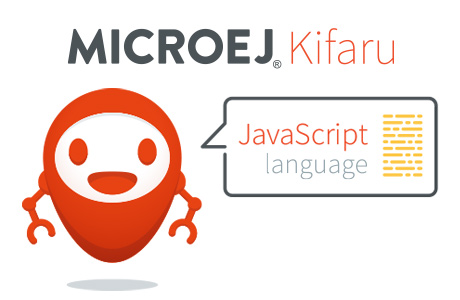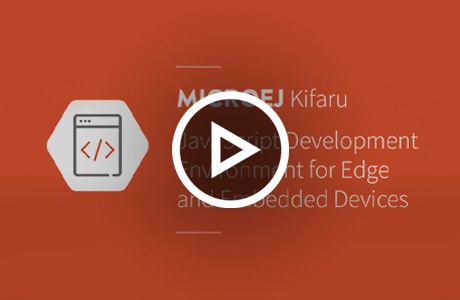 Javascript is gaining recognition as a versatile programming language for embedded systems development. Its rise in popularity can be attributed to its usefulness in rapidly prototyping and testing product ideas. The high-level abstractions offered by JavaScript make the development process easier and more efficient.
Javascript is gaining recognition as a versatile programming language for embedded systems development. Its rise in popularity can be attributed to its usefulness in rapidly prototyping and testing product ideas. The high-level abstractions offered by JavaScript make the development process easier and more efficient.
Moreover, the availability of platforms for MCUs enables developers to write JavaScript code for embedded systems. These platforms offer a flexible and efficient development environment that allows developers to quickly bring their ideas to life.
Discover The Top 5 Benefits of Using JavaScript for Embedded Systems
As JavaScript is gaining popularity in the embedded development community, let’s take a closer look at the its top 5 benefits for embedded systems:
1 • Fast Prototyping Process
JavaScript is notoriously easy to learn. As Embedded Computing stated: “experienced embedded developers may need only a single afternoon with the language before they can read, understand, and successfully modify JavaScript code”. JavaScript’s high-level abstractions and concise syntax make it a great choice for quickly prototyping and testing product ideas. The fast development cycle of JavaScript allows developers to quickly create, test and refine their prototypes, enabling rapid iteration and improvement.
2 • Large JavaScript Community
JavaScript is a widely-used and well-known programming language, making it easier to find developers who are familiar with it. As a result, JavaScript has a vast and active community of developers who can provide support, tutorials, and tools to aid in embedded systems development. In fact, JavaScript was ranked most popular programming language on StackOverflow 2022 annual survey with 68% of votes.
3 • Interoperability With Various Embedded Platforms And Web Technologies
JavaScript is a versatile language for building connected systems due to its ability to interface with various embedded platforms and web technologies. It can run on a wide range of embedded platforms, including Linux-based platforms such as the Raspberry Pi, the Intel Edison, or BeagleBoards, as well as low-power platforms such as the Tessel or Espruino. JavaScript can easily integrate with web technologies such as HTML, CSS, and WebSockets to build connected embedded devices that communicate with web-based applications.
4 • Dynamic and Versatile
JavaScript’s dynamic and versatile nature is driven by its ability to handle different data types without the need for type declarations, its full-stack capabilities with Node.js, and support for functional programming. These features enable developers to write efficient, reusable, and adaptable code for a diverse range of applications. From building interactive user interfaces to enabling communication with other web-based technologies in embedded systems, JavaScript allow for the creation of “smart” objects, such as connected appliances or smart gateways.
5 • Large JavaScript Ecosystem
JavaScript’s thriving ecosystem of libraries, frameworks, and tools makes it easier to build and debug embedded systems applications. From npm‘s package manager to Babel‘s modern-to-legacy code transpiler, TypeScript‘s optional static typing, React‘s UI building blocks, Node.js’s server-side JavaScript runtime, to Webpack‘s code bundler, the language’s vast toolbox empowers developers to build efficient and powerful embedded applications.
Delving into the Limitations of Using JavaScript in Embedded Systems
While JavaScript has many advantages for embedded systems, there are also some limitations and drawbacks to consider.
- JavaScript is not optimized for low-level tasks, and benchmarks show that it can perform slower than low-level languages like C or Assembly.
- Memory usage: Compared to low-level languages like C, JavaScript is known for its relatively high memory usage. In C, developers have more direct control over memory allocation and can optimize memory usage more efficiently. In contrast, JavaScript automatically manages memory allocation for developers, which can lead to higher memory usage in some cases.
- Limited hardware access: JavaScript was designed for web development and does not have direct access to hardware. Developers must use specialized libraries or frameworks to interface with hardware devices, which can be complex and time-consuming.
Unleashing the Full Potential of JavaScript for Embedded Development: Can Software Containers Bridge the Gap?
In the world of embedded development, the unique constraints of embedded systems often clash with the web-oriented nature of JavaScript. Fortunately, standard software containers like MICROEJ VEE offer a solution to bridge this gap.
To make things even easier, MicroEJ has built MICROEJ Kifaru, a powerful platform that allows developers to use JavaScript for embedded development. With a runtime environment optimized for embedded systems and a comprehensive set of libraries and tools for interfacing with hardware, MICROEJ Kifaru offers a seamless way for developers to leverage the convenience of JavaScript while ensuring that their applications will run securely within the MICROEJ VEE software container.
Developers can build high-quality, secure, and efficient embedded applications with ease and speed, pushing the boundaries of what’s possible with JavaScript in embedded development, by relying on the optimized MICROEJ VEE software container for high performing and fast embedded devices.
To find out more about MICROEJ Kifaru and experience its capabilities for yourself, make your way over to our dedicated page to deep dive into the platform’s functionalities and characteristics and even try out a demo.



